Welcome to the exciting world of hydroponic strawberries! In “Hydroponic Strawberries 101: A Step-by-Step Guide to Success,” we embark on a flavorful journey through the art of cultivating these juicy, red gems using innovative hydroponic techniques. Hydroponics, a method of growing plants without soil, has revolutionized strawberry cultivation, offering not only a bountiful harvest but also the joy of year-round strawberry picking.
Have you ever dreamed of plucking fresh, succulent strawberries straight from your own garden, regardless of the season? If so, you’ve come to the right place. In this guide, we’ll explore every facet of hydroponic strawberry cultivation, from selecting the perfect strawberry varieties to troubleshooting common challenges. Whether you’re a seasoned gardener or just starting, this comprehensive resource is your key to a thriving hydroponic strawberry garden. So, let’s dive into the hydroponic world of strawberries and unlock the secrets to a fruitful and rewarding harvest.
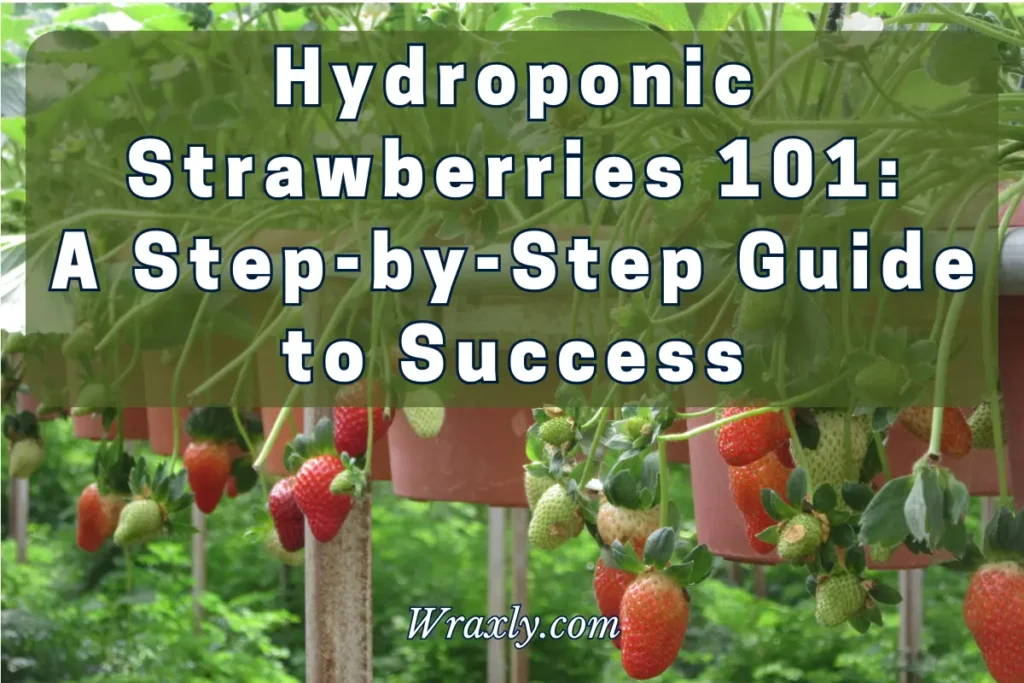
Getting Started
Now that you’re eager to embark on your hydroponic strawberry adventure, it’s time to delve into the crucial initial steps. Getting started is all about laying the foundation for a thriving hydroponic strawberry garden. Let’s begin with the essentials.
A. Selecting the Right Strawberry Varieties
Before you set up your hydroponic system, you need to choose the right strawberry varieties for your garden. Different types of strawberries are better suited for hydroponic cultivation. Some of the most popular hydroponic strawberry varieties include “Tristar,” “Albion,” and “Seascape.” These varieties are known for their adaptability to soilless systems, high yields, and, of course, their delectable taste. Consider your climate, available space, and personal preferences when making your selection.
B. Setting Up Your Hydroponic System
Your hydroponic system is the heart of your strawberry garden. It provides the necessary environment for your plants to thrive. There are several types of hydroponic systems to choose from, including nutrient film technique (NFT), deep water culture (DWC), and vertical towers. Each has its advantages and may be better suited to your specific circumstances. Consider factors like available space, budget, and the number of strawberry plants you plan to grow. Be sure to properly install and test your system to ensure it’s running smoothly before you introduce your precious strawberry seedlings.
C. Choosing a Growing Medium
In hydroponics, soil is replaced by a growing medium that supports the plants and provides a stable anchor for the roots. Common growing mediums for hydroponic strawberries include coconut coir, perlite, and vermiculite. The choice of medium impacts nutrient retention and aeration for the roots. It’s essential to select a medium that promotes healthy root development and efficient nutrient absorption.
D. Essential Tools and Equipment
To succeed in hydroponic strawberry gardening, you’ll need a set of essential tools and equipment. These items include pH meters, electrical conductivity (EC) meters, timers, grow lights, and pumps. Monitoring and maintaining the pH and nutrient levels in your hydroponic system is crucial for your strawberries’ well-being. Additionally, invest in high-quality grow lights to ensure your plants receive the appropriate amount of light for photosynthesis. These tools and equipment are your allies in creating the optimal environment for your hydroponic strawberries to flourish.
Recommended Grow Lights
| Image | Title | Prime | Buy |
|---|---|---|---|
 | Grow Lights for Indoor Plants, DICCEAO 150W LEDs Grow Light for Seed Starting with Full Spectrum, 3/9/12H Timer, 10 Dimmable Levels, 3 Switch Modes, Growing Lamp Suitable for Various Plant | PrimeEligible | Check Price on Amazon |
Top | Lxyoug LED Grow Lights for Indoor Plants Full Spectrum Plant Light with 15-60 inches Adjustable Tripod Stand, Red Blue White Floor Grow Lamp with 4/8/12H Timer with Remote Control | PrimeEligible | Check Price on Amazon |
 | Grow Light with Stand, LBW Full Spectrum 150W LED Floor Plant Light for Indoor Plants, Grow Lamp with On/Off Switch, Adjustable Tripod Stand 15-48 inches | PrimeEligible | Check Price on Amazon |
 | GHodec 4-Head Grow Light with Stand, 80 LED 5500K Full Spectrum Floor Plant Light for Indoor Plants,5 Dimmable Levels & Auto On/Off Timer,Tripod Stand Adjustable 15-48 in | PrimeEligible | Check Price on Amazon |
 | Grow Light with Stand, Gooseneck 4-Head Floor Grow Lights for Indoor Small & Tall Plants, Full Spectrum LED Grow Lamp with Timing 4/8/12H, 9 Dimmable Levels and Auto ON/Off, Adjustable 25"-63" Tripod | PrimeEligible | Check Price on Amazon |
 | Grow Lights for Indoor Plants - Craftersmark 420 LED 300W Floor Plant Light, Full Spectrum Grow Light with Stand, 63 Inch Adjustable Tripod Stand, Timer, Auto On/Off,10 Dimmable Level for Plant Growth | PrimeEligible | Check Price on Amazon |
With the right strawberry varieties, a well-suited hydroponic system, carefully chosen growing medium, and essential tools in place, you’re now prepared to set the stage for a successful hydroponic strawberry garden. The next steps will take you deeper into the heart of hydroponic gardening, where you’ll learn how to nurture your strawberry plants for a bountiful harvest.
Nutrient Management
In the world of hydroponic strawberries, nutrient management is a critical aspect that can make or break your gardening success. Unlike traditional soil-based gardening, where nutrients are naturally present in the soil, hydroponic systems require you to provide your plants with the essential elements they need to thrive. Let’s dive into the intricacies of nutrient management for hydroponic strawberries.
A. Understanding Hydroponic Nutrients
Hydroponic systems rely on a nutrient solution that contains all the essential elements required for plant growth. These elements include macronutrients like nitrogen (N), phosphorus (P), and potassium (K), as well as micronutrients such as iron (Fe), manganese (Mn), and zinc (Zn). The precise nutrient mix and concentrations may vary depending on the growth stage of your strawberry plants.
It’s crucial to understand the nutrient requirements of strawberries at different stages of growth. During the vegetative phase, your plants will need a higher concentration of nitrogen to promote leafy growth. As they transition to flowering and fruiting, a higher phosphorus concentration becomes essential for robust fruit development. Regularly monitor your nutrient solution to ensure your strawberries receive the right balance of nutrients to thrive.
B. Maintaining Optimal pH Levels
The pH level of your nutrient solution is another key factor in hydroponic strawberry success. The pH scale measures the acidity or alkalinity of a solution, and it directly affects the availability of nutrients to your plants. Strawberries typically thrive in a slightly acidic pH range of 5.5 to 6.5.
Recommended pH Meters
| Image | Title | Prime | Buy |
|---|---|---|---|
 | PH Meter, Digital PH Meter, PH Meter for Water, 0.01 PH High Accuracy Water Quality Tester with 0-14 PH Measurement, Water PH Tester Range for Household Drinking, Pool, Aquarium, Hydroponics | PrimeEligible | Check My Price on Amazon |
Top | YINMIK PH Meter, Digital 4 in 1 PH EC TDS Temp Meter for Water Hydroponics, Waterproof DWC PH and EC PPM Water Tester with Backlit for Nutrients Growing, Indoor Garden, Home Brewing, Pool, Aquarium | PrimeEligible | Check My Price on Amazon |
 | VIVOSUN pH and TDS Meter Combo, 0.05ph High Accuracy Pen Type pH Meter ± 2% Readout Accuracy 3-in-1 TDS EC Temperature Meter for Hydroponics, Household Drinking, and Aquarium, UL Certified | PrimeEligible | Check My Price on Amazon |
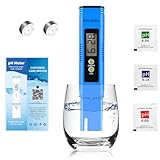 | Digital pH Meter, 0.01 High Accuracy Cpmpact Size pH Tester with 0-14 pH Test Range, Already Calibrated pH Meter for Water Easy to Use pH Pen, Water Tester for Drinking Water, Hydroponics and Pool | PrimeEligible | Check My Price on Amazon |
 | bluelab pH Pen-Digital pH Tester - Reliable & Accurate for High Yield Crops - Hand-Held Meter - Measures pH & Temperature in Solutions and Soil Solutions - Optimize Plant Health & Performance,White | PrimeEligible | Check My Price on Amazon |
 | APERA INSTRUMENTS AI209 Value Series PH20 Waterproof pH Tester Kit, ±0.1 pH Accuracy | PrimeEligible | Check My Price on Amazon |
Regularly monitor and adjust the pH of your nutrient solution to maintain it within this ideal range. If the pH drifts too high or too low, it can lead to nutrient imbalances and nutrient lockout, where plants are unable to absorb essential nutrients. To keep your strawberries healthy and productive, invest in a quality pH meter and the necessary pH-adjusting solutions.
C. The Role of EC (Electrical Conductivity) in Hydroponic Strawberries
Electrical Conductivity (EC) measures the concentration of dissolved salts in your nutrient solution. In hydroponic strawberry cultivation, EC is a vital parameter to monitor. It provides insights into the overall strength and concentration of your nutrient solution.
Strawberries, like all plants, have specific EC requirements at different growth stages. During the seedling stage, a lower EC is appropriate, while as your plants mature and produce fruit, you’ll need to adjust the EC upward to meet their increased nutrient demands. Regularly measuring and adjusting the EC of your nutrient solution ensures your strawberry plants receive the optimal nutrient concentration they require for healthy growth and fruitful yields.
By understanding and mastering nutrient management, you’re well on your way to a thriving hydroponic strawberry garden. Your strawberries will thank you with luscious, ripe fruit, and you’ll be on the path to becoming a hydroponic strawberry gardening expert.
Planting and Propagation
Planting and propagation are pivotal steps in your hydroponic strawberry journey. Whether you’re starting from seeds or transplants, these decisions will set the stage for your future harvest. Let’s explore the best practices for successful planting and propagation of hydroponic strawberries.
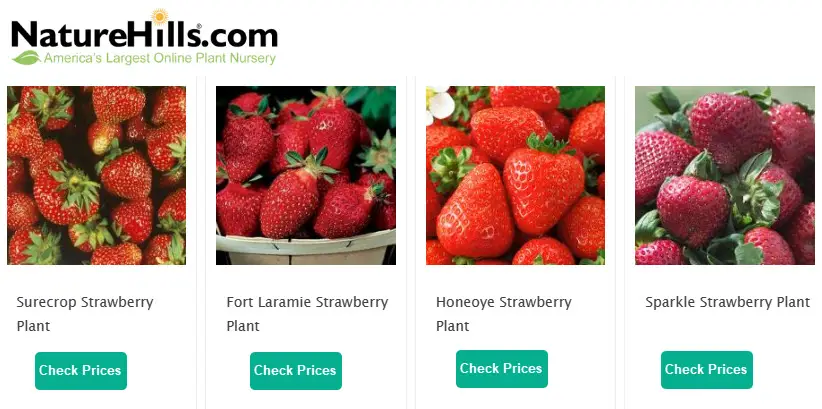
A. Starting from Seeds or Transplants
- Seeds: If you choose to start from seeds, begin by selecting high-quality strawberry seeds of the variety you desire. It’s essential to use sterile media or seedling trays to ensure a clean environment for germination. Plant the seeds in a suitable growing medium, keep them warm, and provide adequate light. Once the seedlings have developed their first true leaves, you can transplant them into your hydroponic system.
- Transplants: Starting from transplants can save you time and expedite your strawberry production. You can purchase strawberry plants or propagate them from runners, which are horizontal stems produced by mature strawberry plants. Transplants should be disease-free and well-acclimated to hydroponic conditions. Carefully transfer them to your hydroponic system, making sure to protect their delicate roots during the process.
B. Ideal Plant Spacing
Proper plant spacing is essential to ensure that your hydroponic strawberry plants receive sufficient light and airflow. The spacing will depend on the type of hydroponic system you’re using. For NFT or DWC systems, a spacing of about 12 to 18 inches between plants is ideal. In vertical systems, ensure that plants are placed to receive even light distribution.
C. Germination and Transplantation Tips
- Germination: Whether you’re germinating seeds or caring for transplants, maintaining the right environmental conditions is crucial. Keep the temperature around 70-75°F (21-24°C) for optimal germination. Adequate humidity and light are also important. Seedlings or transplants should be well-established and healthy before they are introduced into your hydroponic system.
- Transplantation: When transplanting, handle your strawberry plants with care. Ensure that the roots are not damaged during the process. If you’re using a growing medium, make a small hole for the transplant and gently secure it in place. Ensure that the roots are fully submerged in the nutrient solution or growing medium, depending on your hydroponic system.
By starting your hydroponic strawberry garden with either seeds or transplants and paying attention to proper plant spacing, you’re setting the stage for a successful and productive strawberry crop. The next stages will explore how to create the ideal environmental conditions and provide ongoing care to ensure your hydroponic strawberries flourish.
Environmental Conditions
Creating the right environmental conditions is crucial for the success of your hydroponic strawberry garden. Strawberries are sensitive to temperature, humidity, and light, and providing the ideal environment will promote healthy growth and fruitful harvests. Let’s dive into the specifics of managing these conditions.
A. Temperature and Humidity Control
- Temperature: Strawberries thrive in a moderate temperature range. Keep the ambient temperature within the range of 60-75°F (15-24°C) for optimal growth. Maintaining a stable temperature is essential; fluctuations can stress your plants and affect fruit production. Consider using heaters, coolers, or fans to regulate the temperature in your hydroponic setup.
- Humidity: Hydroponic strawberry plants benefit from moderate humidity levels. Aim for a relative humidity of around 60-70%. Adequate humidity promotes healthy growth, reduces stress, and minimizes the risk of common fungal diseases. Use a humidifier or dehumidifier, as needed, to maintain the desired humidity levels.
B. Proper Ventilation in Your Hydroponic Setup
Effective ventilation is key to maintaining the right environmental conditions in your hydroponic strawberry garden. Proper airflow helps prevent the buildup of excess moisture, which can lead to mold and disease. Consider using exhaust fans or adjustable vents in your indoor setup to ensure good air circulation. In greenhouse environments, use side vents and roof vents to regulate temperature and humidity.

C. Managing Light Intensity and Duration
Light is a fundamental requirement for photosynthesis, and for hydroponic strawberries, it’s important to get the lighting right.
- Lighting Intensity: Strawberries need abundant light to grow and fruit optimally. If you’re growing your hydroponic strawberries indoors, high-quality LED or T5 grow lights are excellent choices. Position the lights at the appropriate distance to provide your plants with the right intensity. Typically, 12-16 hours of light per day is suitable for strawberry growth.
- Light Spectrum: Pay attention to the light spectrum. Strawberry plants benefit from a full spectrum of light, including blue and red wavelengths. LED grow lights designed for horticultural use often provide the right spectrum for optimal growth.
- Light Duration: While strawberries require long daylight hours for vegetative growth, you may need to adjust the duration of light exposure to stimulate flowering and fruiting. Typically, reducing the daily light exposure to 8-12 hours can encourage strawberry plants to initiate the fruiting stage.
By carefully controlling the temperature, humidity, ventilation, and lighting in your hydroponic strawberry garden, you’re creating the perfect environment for your plants to thrive. The next section will guide you on the maintenance and care required to ensure your hydroponic strawberries remain healthy and productive.
Maintenance and Care
Your hydroponic strawberry plants are now nestled in an environment optimized for their growth, but successful cultivation doesn’t end with setup. Ongoing maintenance and care are essential to ensure your strawberries remain healthy and productive. Let’s explore the key tasks to keep your hydroponic strawberry garden flourishing.
A. Regular Monitoring of Nutrient Levels
The nutrient solution in your hydroponic system is the lifeblood of your strawberry plants. Regular monitoring of nutrient levels is crucial to ensure that your plants receive the right balance of essential elements. Use an EC (Electrical Conductivity) meter to measure the concentration of dissolved salts in your nutrient solution. Keep a close eye on pH as well to maintain it within the ideal range for strawberries.
Regular checks and adjustments are necessary because as your strawberry plants grow, their nutrient requirements change. For instance, during the fruiting stage, they may require higher phosphorus levels. Adjust the nutrient solution accordingly to meet these evolving needs.
B. Pruning and Training Strawberry Plants
Pruning and training are important practices to optimize the growth and fruit production of your hydroponic strawberries.
- Pruning: Regularly inspect your plants for dead or diseased leaves and remove them to prevent the spread of diseases. Trim runners (long, horizontal stems) as they divert energy from fruit production. Focus on maintaining a healthy canopy of leaves and flowers for improved yields.
- Training: Properly training your strawberry plants is key to managing their growth and maximizing productivity. Use trellises, cages, or other support structures to keep plants upright and well-ventilated. Training also helps prevent the fruits from touching the ground, reducing the risk of rot.
C. Pest and Disease Management in Hydroponic Systems
Even in hydroponic systems, pests and diseases can be a concern. Regularly inspect your strawberry plants for signs of common issues like aphids, spider mites, or powdery mildew. Consider using biological controls, such as beneficial insects, to manage pests. Maintaining a clean and hygienic environment, including sterilizing equipment and pruning tools, can help prevent disease outbreaks.
Stay vigilant and address any issues promptly to prevent them from becoming severe. Remember, early intervention is often the key to successful pest and disease management.
By dedicating time and attention to the maintenance and care of your hydroponic strawberry plants, you’re ensuring they continue to thrive and produce an abundant harvest. The next section will guide you on the crucial topic of pollination in hydroponic strawberry gardening.

Pollination
In the world of hydroponic strawberries, successful pollination is essential for fruit production. Unlike outdoor gardens where natural pollinators like bees do the job, hydroponic systems require some human intervention. Understanding the importance of pollination and employing the right methods are crucial for a bountiful harvest of hydroponic strawberries.
A. The Importance of Pollination in Hydroponic Strawberries
Pollination is the process of transferring pollen from the male reproductive organ (anther) to the female reproductive organ (stigma) of a flower. For strawberries, this transfer is vital because it initiates the development of fruit. Proper pollination leads to the formation of plump, juicy berries. In hydroponic systems, where natural pollinators may be absent, it’s up to you to ensure this crucial step is not overlooked.
B. Methods for Pollinating Your Hydroponic Strawberry Plants
- Hand Pollination: This method involves manually transferring pollen from the stamen (male part) of one flower to the pistil (female part) of another. To hand-pollinate your hydroponic strawberries, use a small brush, cotton swab, or even your finger. Gently brush the inside of each flower to ensure that pollen is transferred. You can perform hand pollination daily during the flowering season to increase the chances of successful fruit set.
- Electric Toothbrush Method: Some hydroponic gardeners find success using an electric toothbrush for pollination. By briefly vibrating the flowers with an electric toothbrush, you can help dislodge and transfer pollen. This method mimics the vibration that natural pollinators, like bees, provide.
- Introduce Beneficial Insects: If your hydroponic setup allows, introducing beneficial insects like bumblebees can be an effective way to facilitate pollination. Bumblebees are efficient pollinators and can help increase fruit set in your strawberry plants. Be sure to provide suitable conditions for the bees, including access to the plants and appropriate temperature and humidity levels.
Proper pollination is the key to your hydroponic strawberry plants bearing fruit. Without successful pollination, you may have healthy plants but a limited strawberry harvest. By understanding the significance of pollination and using the right techniques, you’ll ensure that your hydroponic strawberries are on their way to producing a delightful bounty.
Harvesting and Enjoying Your Bounty
The culmination of your hard work and dedication in your hydroponic strawberry garden is the joy of harvesting and savoring the delicious fruits of your labor. Knowing when and how to harvest your hydroponic strawberries is essential for preserving their freshness and flavor. Let’s delve into the art of harvesting and explore delightful ways to enjoy your homegrown strawberries.
A. Recognizing When Strawberries are Ready for Harvest
Strawberries are at their peak of flavor when fully ripe. To determine if your hydroponic strawberries are ready for harvest, look for the following signs:
- Color: Ripe strawberries will display vibrant red or pink hues, depending on the variety. The entire berry should be uniformly colored.
- Texture: Gently touch the berries; they should be firm but not hard. Overripe strawberries may be mushy, while underripe ones can be too firm.
- Size: Hydroponic strawberries typically don’t grow as large as their outdoor counterparts, but they should have reached a reasonable size.
- Aroma: Ripe strawberries release a sweet, fragrant aroma. If you can smell the strawberry’s sweet scent, it’s likely ready for picking.
- Taste: The most foolproof method is to taste a strawberry. If it’s sweet, juicy, and flavorful, it’s time to harvest the rest.
B. Techniques for Picking Hydroponic Strawberries
To harvest your hydroponic strawberries without damaging the delicate fruit or plants, use the following techniques:
- Hold the Berry: Gently grasp the stem just above the berry. Be careful not to squeeze the fruit.
- Twist and Pull: With a gentle, twisting motion, detach the ripe strawberry from the stem. It should come off easily.
- Use Scissors: If the stem is too tough to twist, use sterilized scissors to cut it at the base.
- Avoid Touching Unripe Berries: If some strawberries on the same plant are not yet ripe, be mindful not to touch or disturb them to allow for further ripening.
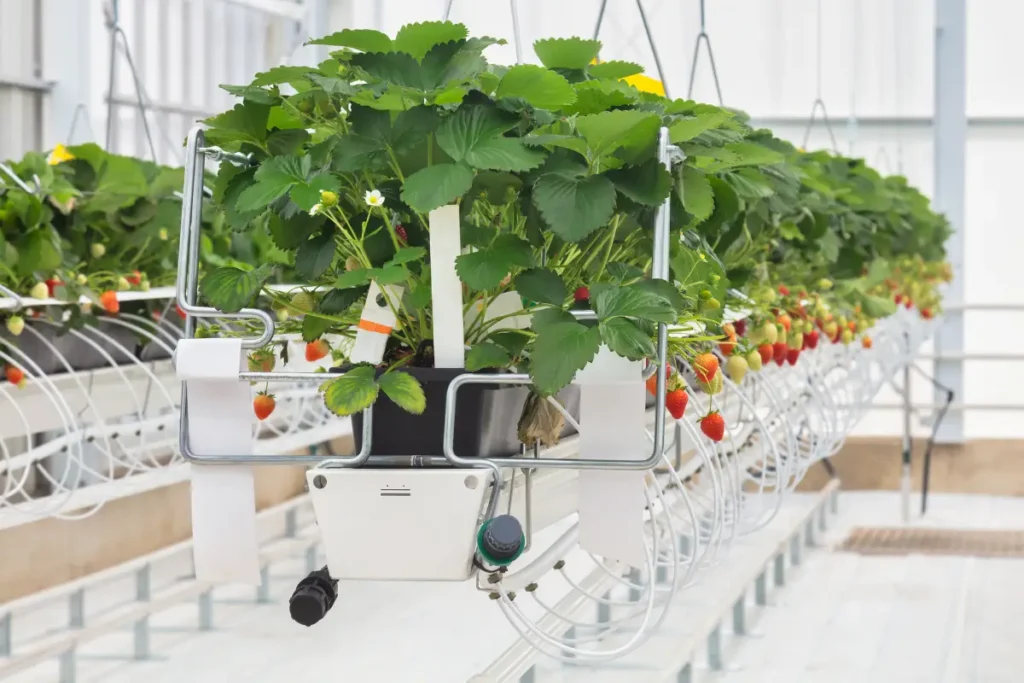
C. Delicious Ways to Enjoy Your Fresh Harvest
The beauty of growing hydroponic strawberries is the joy of indulging in their fresh, sweet, and juicy taste. Here are some delightful ways to savor your homegrown strawberries:
- Fresh and Unadorned: There’s nothing quite like biting into a fresh, ripe strawberry. Enjoy them as a healthy snack straight from the garden.
- Strawberry Parfait: Layer your strawberries with yogurt, granola, and a drizzle of honey for a delicious parfait.
- Strawberry Smoothie: Blend your strawberries with some ice, yogurt, and a touch of honey for a refreshing smoothie.
- Strawberry Shortcake: Create a classic dessert by layering sliced strawberries over sponge cake or shortcake, topped with whipped cream.
- Strawberry Jam: Preserve your strawberry bounty by making homemade strawberry jam. It’s a perfect way to enjoy the flavor of summer year-round.
By mastering the art of harvesting and relishing the sweet rewards of your hydroponic strawberry garden, you’ll truly appreciate the fruits of your labor. Enjoy the fresh, juicy taste and explore various culinary creations with your homegrown strawberries.

Troubleshooting Common Issues
In the journey of hydroponic strawberry gardening, challenges can arise from time to time. It’s essential to be prepared for and knowledgeable about common issues and how to address them promptly. By understanding and tackling these challenges, you can ensure the continued success of your hydroponic strawberry garden.
A. Addressing Yellowing Leaves and Nutrient Deficiencies
- Yellowing Leaves: Yellowing leaves, especially the older ones at the bottom of your plants, can be a sign of nutrient deficiencies. It may indicate a lack of essential elements like nitrogen, magnesium, or iron. Regularly check the EC and pH of your nutrient solution to ensure it’s well-balanced. Adjust the nutrient concentrations as needed to provide the missing elements.
- Nutrient Deficiencies: Hydroponic systems require you to be vigilant about nutrient levels. Common nutrient deficiencies include nitrogen (yellowing of older leaves), magnesium (interveinal yellowing), and iron (pale green leaves). Research the specific symptoms and correct deficiencies using appropriate hydroponic fertilizers.
B. Dealing with Mold and Fungus
- Powdery Mildew: Powdery mildew can affect strawberry plants in indoor environments. To prevent it, maintain proper air circulation and humidity levels. If you notice white, powdery spots on leaves, address it with a fungicidal treatment suitable for hydroponics.
- Gray Mold (Botrytis): Gray mold is a common issue in strawberry plants. It often affects overripe or damaged fruit. Ensure good ventilation and promptly remove any affected fruit. Reduce humidity and maintain good hygiene to prevent its spread.
C. Handling Other Challenges in Hydroponic Strawberry Gardening
- Pests: Keep an eye out for common pests like aphids, spider mites, and thrips. Employ integrated pest management strategies, such as releasing beneficial insects or using horticultural oils or insecticidal soaps as necessary.
- Environmental Fluctuations: Sudden temperature or humidity fluctuations can stress your plants. Invest in environmental controls and automated systems to maintain stable conditions.
- Root Health: Healthy roots are critical to nutrient absorption. Monitor root health by checking for signs of root rot. If you notice any issues, adjust the nutrient solution, reduce humidity, and ensure adequate aeration around the roots.
Remember that challenges are a part of the learning process in hydroponic strawberry gardening. Regular observation and proactive measures can help you address and overcome common issues. By staying vigilant, you’ll continue to nurture thriving strawberry plants and enjoy delicious, homegrown fruit.
For Further Reading
- How to Master Hydroponic Tomatoes
- How Many Strawberries Can You Expect
- How to Plant Bare Root Strawberries
- How to Grow Strawberries Indoors
- Hydroponic Strawberries
- Blueberry Companion Plants
Final Thoughts on Growing Hydroponic Strawberries
Your journey into the world of hydroponic strawberries is a delightful endeavor that promises year-round access to fresh, succulent berries. With this comprehensive guide, you’ve gained the knowledge and expertise needed to successfully grow these delectable fruits in your hydroponic system.
As you nurture your strawberry plants, remember that patience, environmental control, and diligent care are the keys to a fruitful harvest. Each strawberry you pick is not just a testament to your gardening dedication but also a sweet reward for your efforts. Whether you’re a seasoned gardener or just starting, the world of hydroponic strawberries invites you to cultivate and enjoy the fruits of your labor. Happy gardening, and may your hydroponic strawberry garden be abundant and delicious!

Darrell has a passion for gardening that he inherited from his father. Go here to read more about the influence his father played in his love for gardening. If you want to send Darrell a quick message, then visit his contact page here.


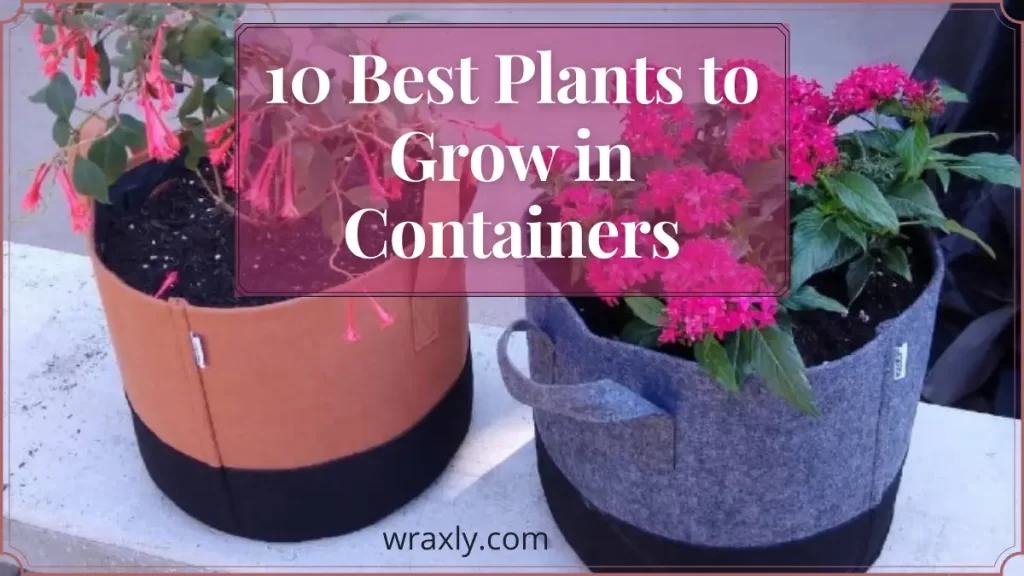
![How to Water Indoor Plants [Plant Care 101]](https://wraxly.com/wp-content/uploads/2021/03/How-to-Water-Indoor-Plants-Plant-Care-101-1200-1024x576.webp)
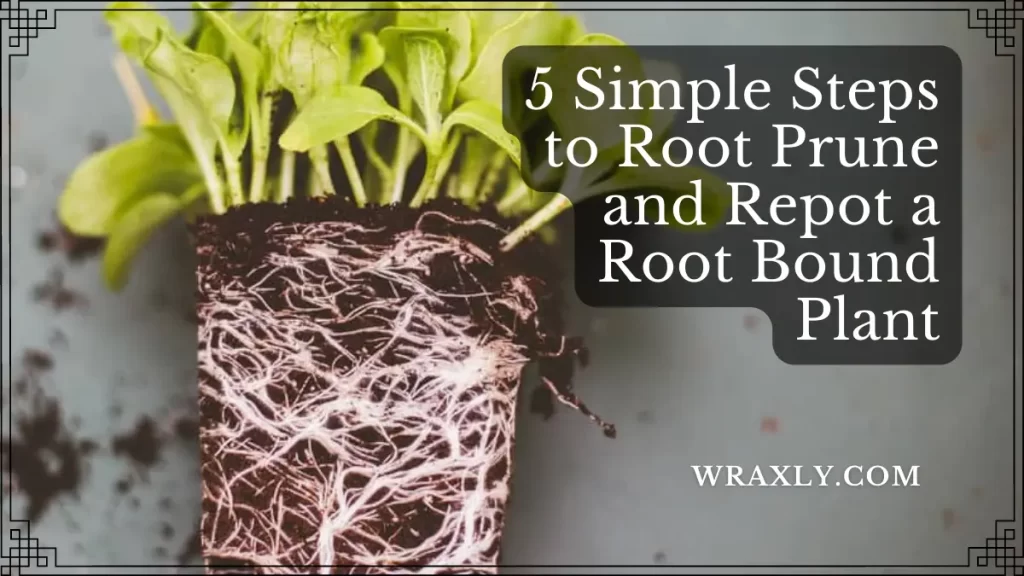
![Growing Plants from Cuttings [A Simple Guide]](https://wraxly.com/wp-content/uploads/2021/03/Growing-Plants-from-Cuttings-A-Simple-Guide-1200-1024x576.webp)